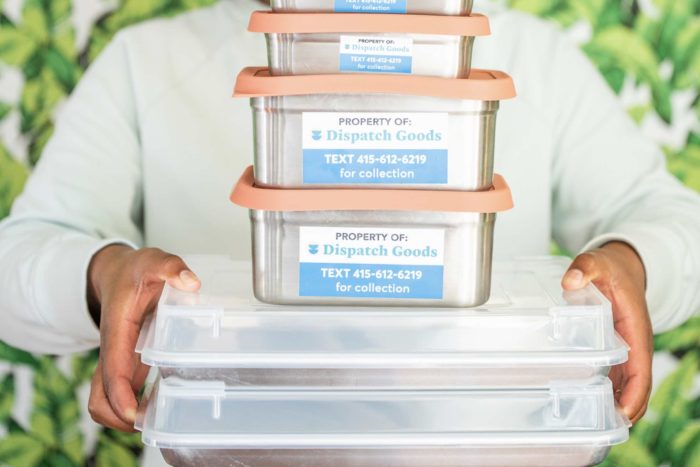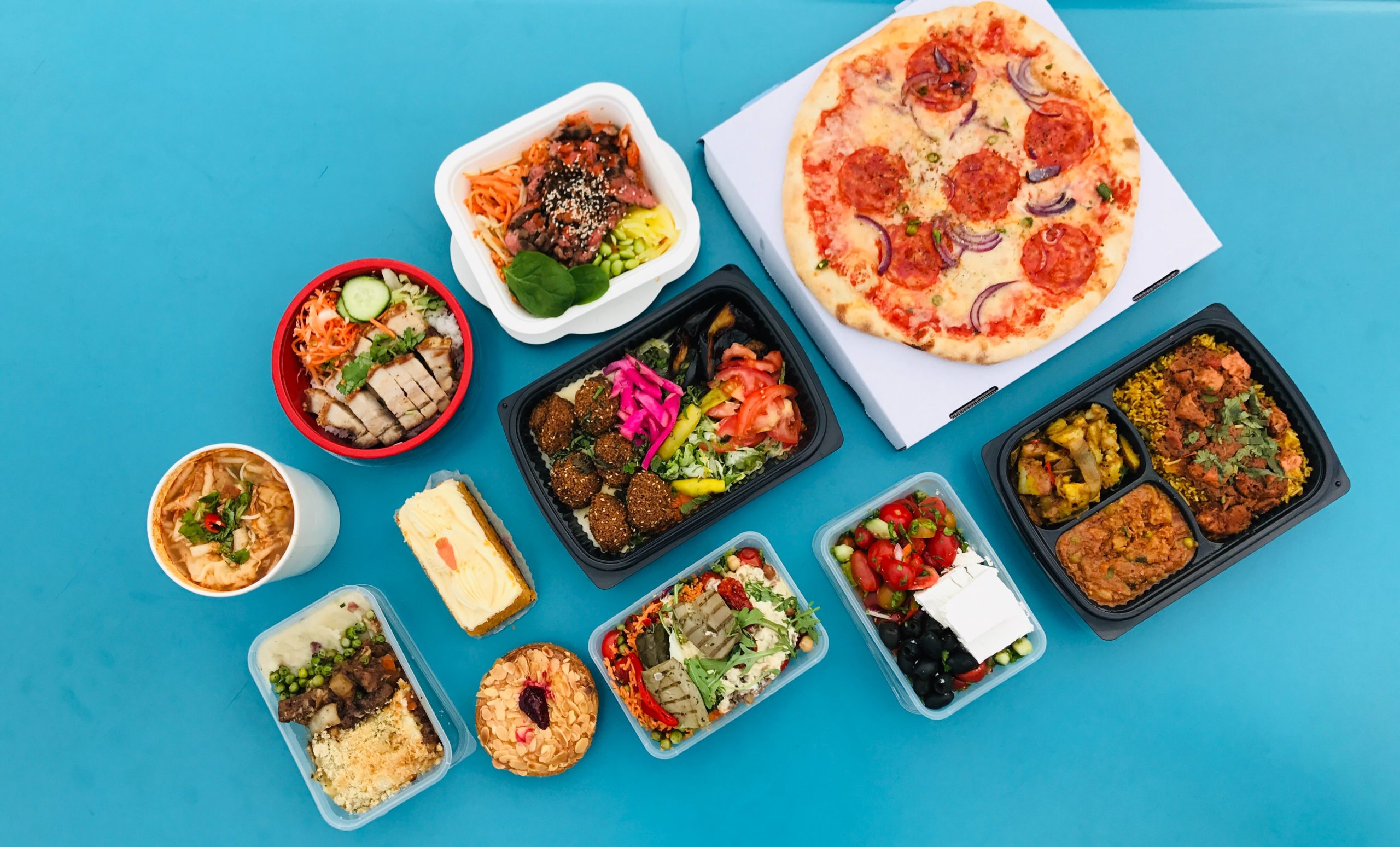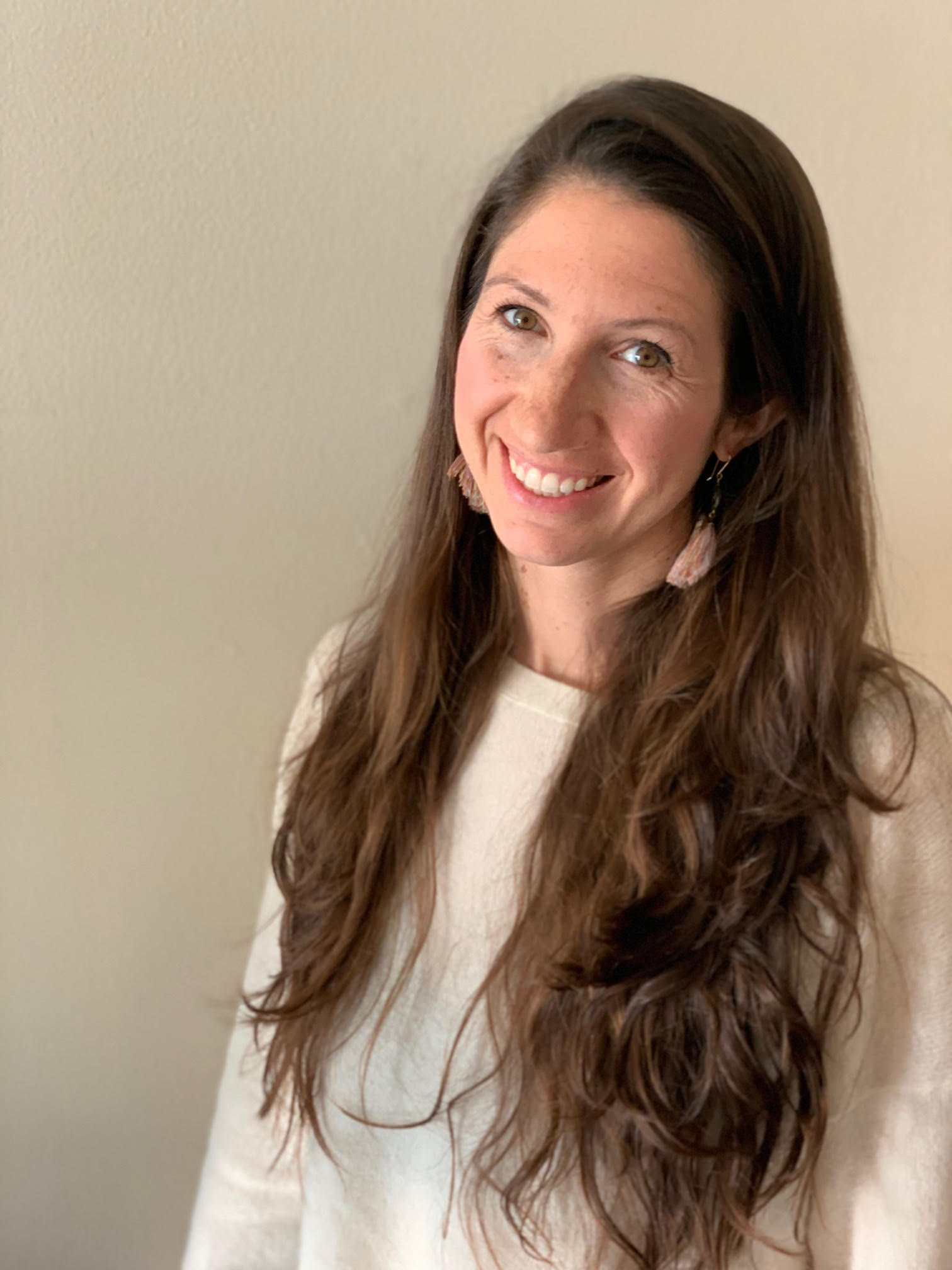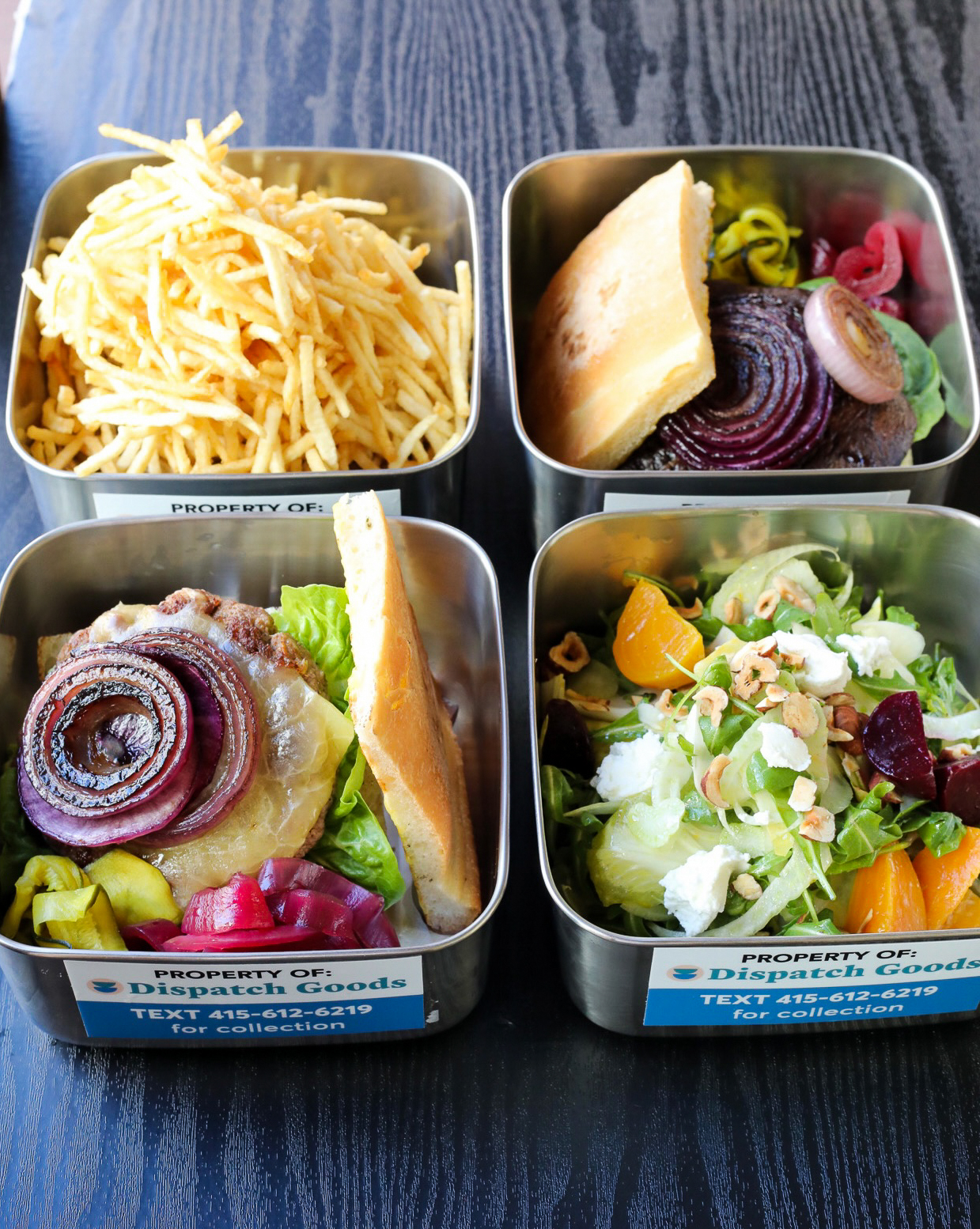
Yesterday, Upstream released its Reuse Wins report, which shows the impact and growth of a reuse economy to replace single-use products in the food service industry. They found that around 20 billion pieces of trash are from disposable food-service packaging, and businesses and city governments are spending $6 billion on solid waste management costs to dispose of it. With this in mind—on top of witnessing tons of microplastics wash up at the beach—Lindsey Hoell and her co-founder Maia Tekle came up with Dispatch Goods to begin tackling the takeout market. They’ve partnered with restaurants in San Francisco to provide food in reusable stainless steel containers and the system couldn’t be easier: 1. Order food from a partner restaurant, adding a fee of one or two dollars for reusable packaging. 2. After enjoying your food, either leave the thermal bag and containers outside your home for Dispatch Goods to collect, or deposit them in a return bin. 3. Dispatch Goods sterilizes the containers, lids and bags and redistributes them to partner restaurants. —Charlotte DeFazio
How did surfing inspire you to start Dispatch Goods?
My husband and I were living in Hawaii, and we were hiking to a remote surf break on Kauai. When we rounded the corner to see the break, the sand looked as though it was rainbow colored. When I got closer and picked up a handful of it, I realized it was microplastics that had washed up. At that moment, I realized that this is not a littering issue; this is a source generation issue. A lightbulb went off and I knew something desperately needed to change. I soon joined the Surfrider Foundation, and they were launching a program called Ocean Friendly Restaurants. I led that program and helped restaurants transition to more sustainable practices, but I soon found there wasn’t a sustainable option for all of the take-out and delivery. So, I went back to get my MBA at Berkeley and take this problem head on.
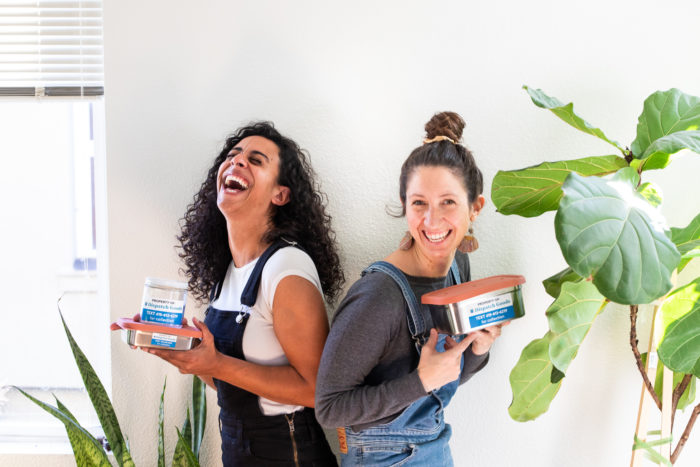
Why stainless steel containers?
A few reasons:
- Steel has a high reclamation rate, so we have confidence that even after it leaves our system, it has material value so it will be recycled.
- Plastic, even reusable plastic, has health concerns related to the well-documented endocrine disruption caused by bisphenols.
- We think reuse has a really exciting opportunity to beat single-use products based on the experience. We are all tired of eating out of garbage!
How are containers sanitized before being used again?
Before starting the company, my cofounder and I both became Food Safety Managers in order to learn the health department requirements for commercial cleaning. The mandated requirements are wash, rinse, and sanitize—we undergo that process twice, the first time by hand, the second time in an industrial dishwasher. The containers are then air dried, per health department recommendations, and then placed into a sealed bin. The seal is broken by the restaurants after they receive the containers.
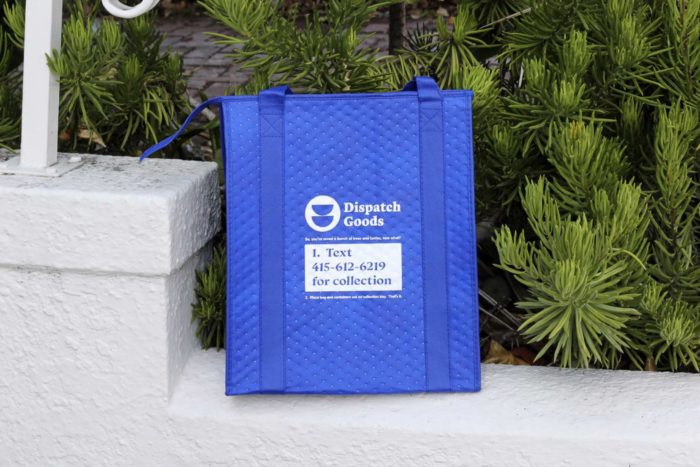
Your motto is “more taste-y, less waste-y.” Do you find plastic and styrofoam negatively impact a dish’s flavor?
Yes! And I think that the concept of eating out of plastic negatively impacts the experience of eating delicious food prepared by thoughtful chefs. Also, our containers have additional features that keep foods a bit hotter and crispy food crispier because since they are multi-use, we can invest in the packaging.
What is the response you’re having so far? And has there been issues with people returning the containers?
The response has been encouraging and heartwarming. We get the sweetest notes from our customers, and our restaurant partners understand that they are building this with us. I had no idea how ready the world was for an alternative before I got the ball rolling with Dispatch Goods. Although theft and loss do occur, we’ve built those rates into our business model, and we are learning so much, so quickly, and have a far better idea of how to optimize the return rates than we did a year ago. Generally, people want to be part of the solution.
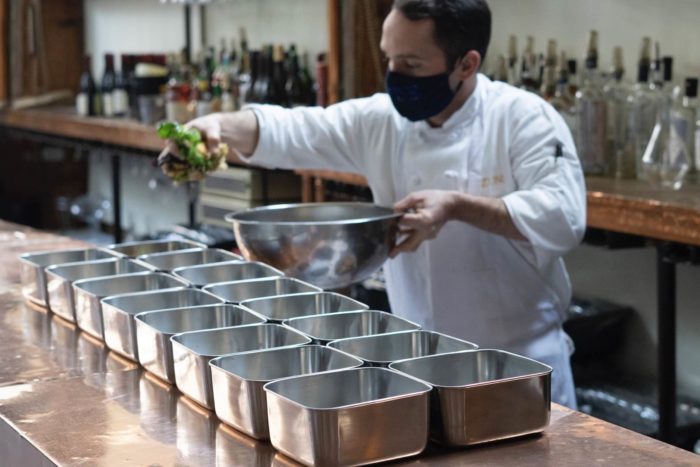
Can you see reusable takeaway containers happening at a national level?
Yes, I absolutely think this will happen on a national level. Honestly, it has to. As a planet, we don’t have enough resources to accommodate creating single-use items for three meals a day for a growing global population—even if the materials are more sustainable. In my opinion, creating extended-producer responsibility policies will likely be the fastest way to shift change. Right now, there is a disconnect between the manufacturer, who creates the waste, and the end consumer and municipalities, who carry the burden of handling the waste. We need to tie end-of-life into the price of the product so that companies can make better choices, rather than passing those negative externalities onto people who don’t have an alternative.
It’s great that so much waste is being kept out of landfills, but there’s still the water and energy being used to sanitize the containers and bags, and the fuel to run the collection vehicles.
Water savings is one of the most exciting parts of reuse. It takes far less water to wash a dish than to manufacture one (as much as 10x less), and that’s something we track in our sustainability metrics. Understanding the difference in the carbon footprint is a little more nuanced because it depends where the single-use, and eventually the reusable container, ends up, as well as what its journey was to reach the consumer. That being said, collecting and processing (dishwashing) a container locally takes much less energy than manufacturing and shipping a container from across the world, and with density, the energy savings will only improve over time.
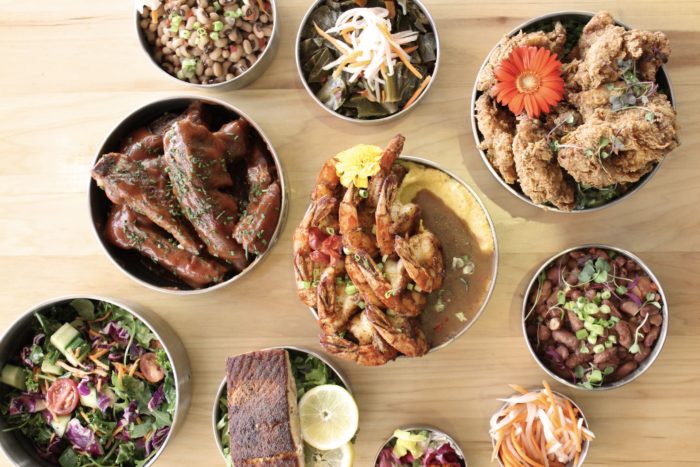
Are there lessons you learned from the pandemic that shaped how you will do business going forward?
We originally built our business model around the downtown lunch crowd, and we placed return bins in offices. However, when the world changed due to COVID-19, we had to quickly shift, but there was never going to be a better time to test reuse for take-out and delivery, so we leaned into it! I think we had the opportunity to partner with some restaurants that were doing take-out for the very first time and were horrified at the waste implications. This helped us understand how large of a pain point this is for restaurants, not just consumers.
How much waste have you kept from landfills thus far?
This month we will reach over 100,000 single-use items kept from the waste stream in total! I’d love to reach 500,000 by the end of the year, but we will need to hustle to get there!
What’s next for Dispatch Goods?
We are about to launch our seed round of fundraising so that we can accelerate partner onboarding and build out the technical infrastructure and processes needed to scale. After that, we will expand to the Greater Bay area and begin planning for our subsequent markets. And then, change the world, of course!
